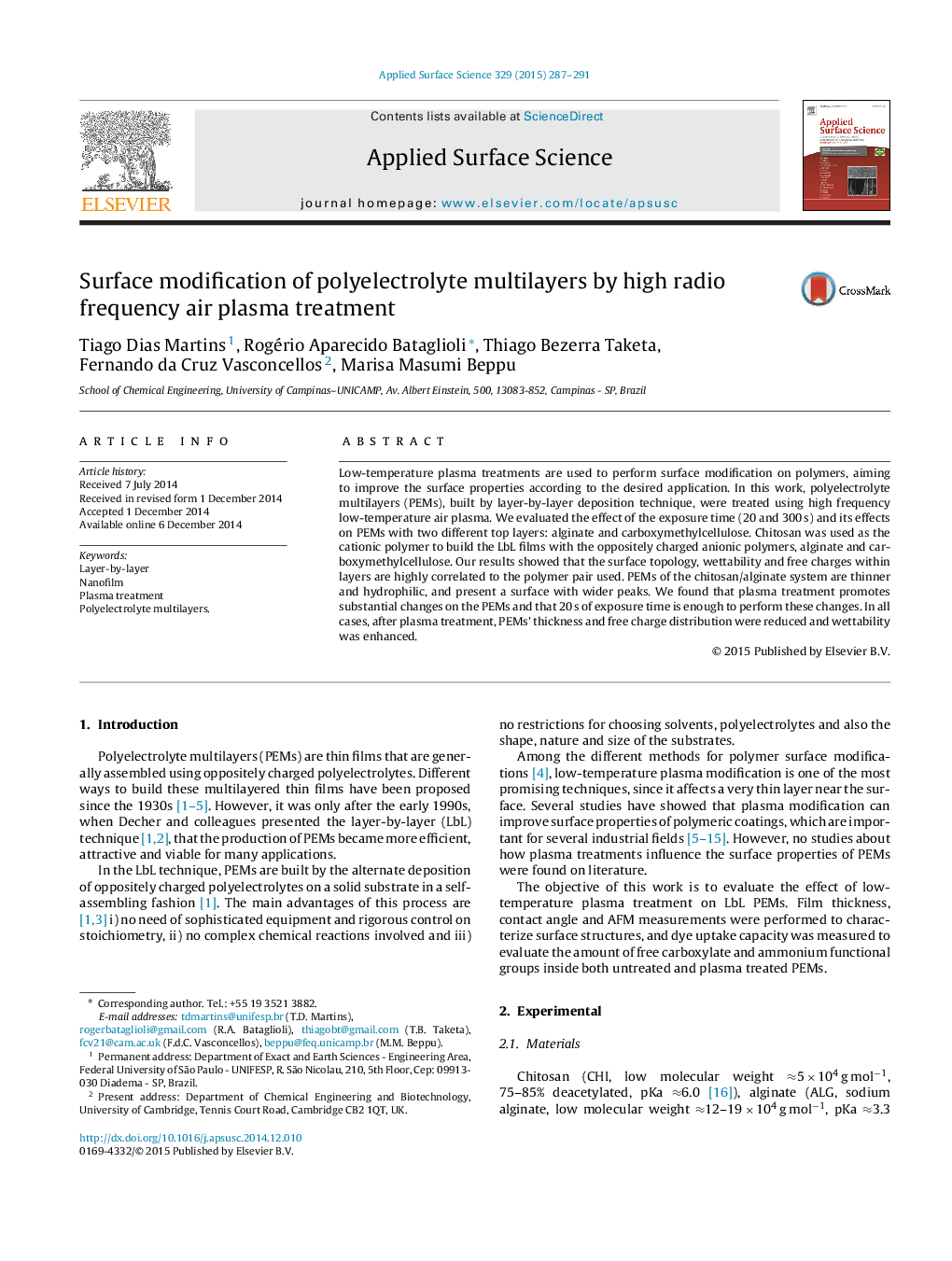| Article ID | Journal | Published Year | Pages | File Type |
|---|---|---|---|---|
| 5359635 | Applied Surface Science | 2015 | 5 Pages |
Abstract
Low-temperature plasma treatments are used to perform surface modification on polymers, aiming to improve the surface properties according to the desired application. In this work, polyelectrolyte multilayers (PEMs), built by layer-by-layer deposition technique, were treated using high frequency low-temperature air plasma. We evaluated the effect of the exposure time (20 and 300Â s) and its effects on PEMs with two different top layers: alginate and carboxymethylcellulose. Chitosan was used as the cationic polymer to build the LbL films with the oppositely charged anionic polymers, alginate and carboxymethylcellulose. Our results showed that the surface topology, wettability and free charges within layers are highly correlated to the polymer pair used. PEMs of the chitosan/alginate system are thinner and hydrophilic, and present a surface with wider peaks. We found that plasma treatment promotes substantial changes on the PEMs and that 20Â s of exposure time is enough to perform these changes. In all cases, after plasma treatment, PEMs' thickness and free charge distribution were reduced and wettability was enhanced.
Related Topics
Physical Sciences and Engineering
Chemistry
Physical and Theoretical Chemistry
Authors
Tiago Dias Martins, Rogério Aparecido Bataglioli, Thiago Bezerra Taketa, Fernando da Cruz Vasconcellos, Marisa Masumi Beppu,
